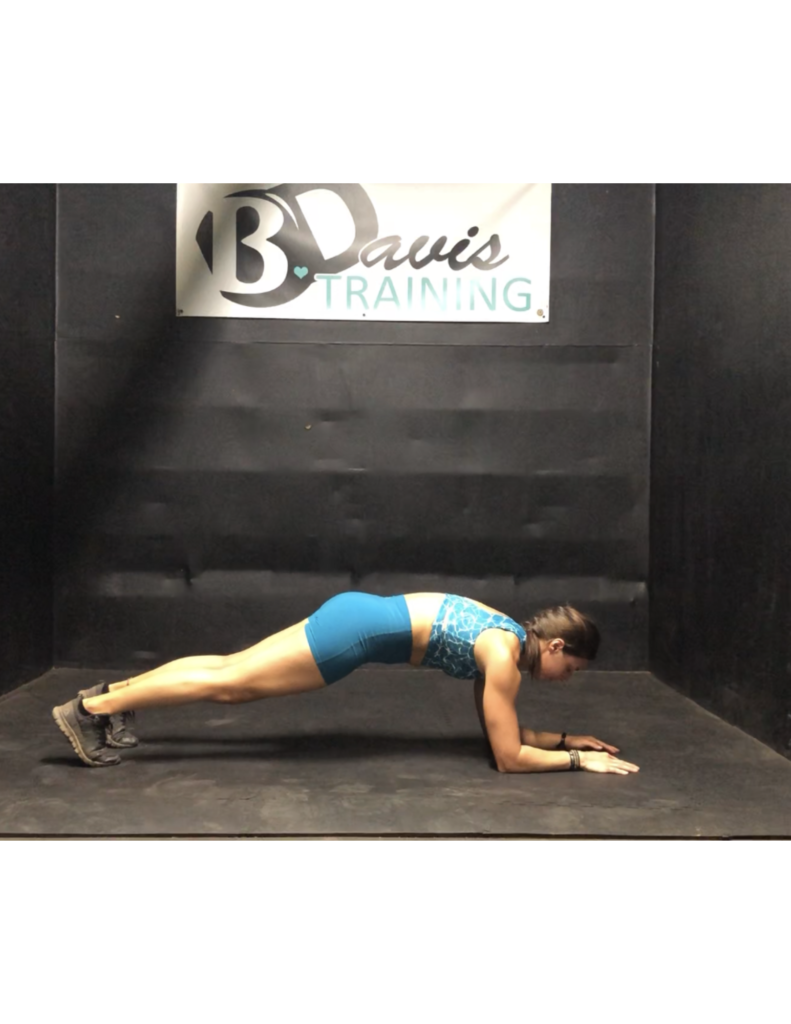
Have you been experiencing back pain or slouching lately? Poor body posture can wreak havoc on your body over time, leading to chronic pain, discomfort, and even injury. Luckily, strengthening your core can help improve your posture and prevent these issues from arising.
But where do you start? Here are the best exercises for posture correction to help you strengthen your core and improve posture. Incorporating these exercises into your daily schedule can significantly impact your overall health and wellness and pilates to improve posture. Let’s dive in and start strengthening that core!
Contents
Good posture is vital for our health and well-being. Poor posture can lead to various physical and mental issues, such as neck pain, headaches, low back pain, fatigue, poor concentration, and even depression. It’s essential to identify the types of postures you may have to understand why it’s so necessary to correct it.
Good posture is a vital aspect of physical health, affecting your bones, joints, and muscles. Here are some types of good posture and their benefits:
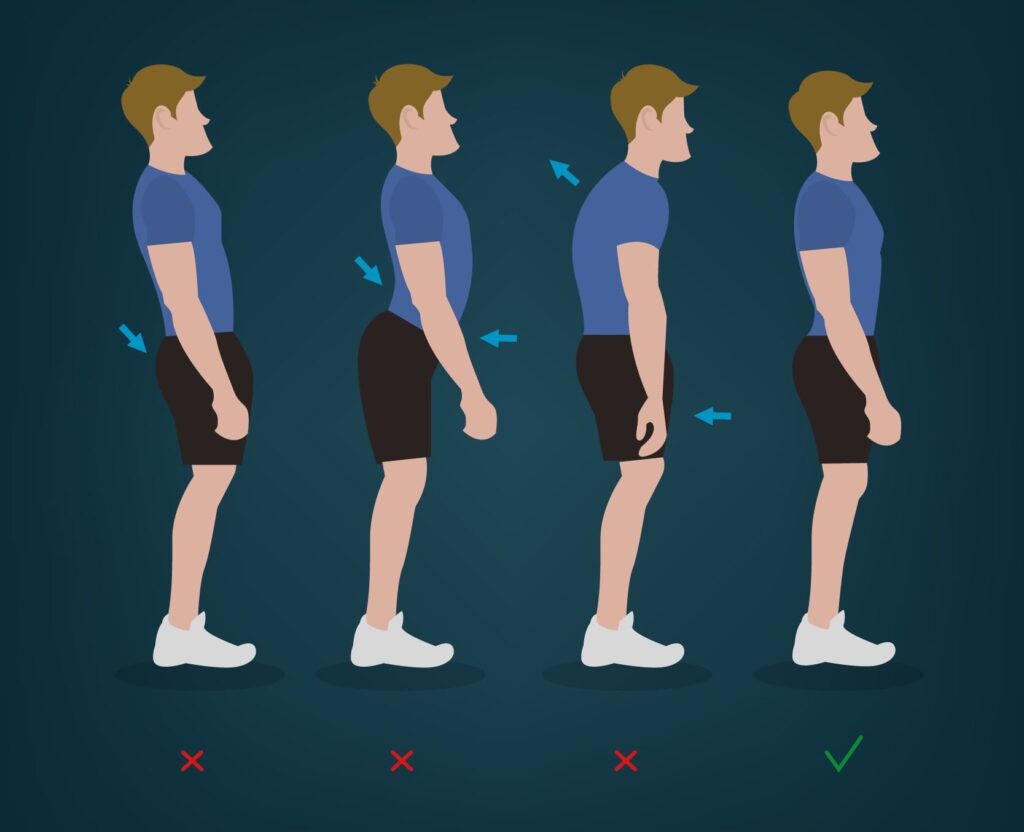
This type of posture involves standing with your feet shoulder-width apart, weight evenly distributed between both legs and your abdominals pulled in tight. Proper standing posture helps to reduce strain on your back and neck muscles while also improving balance and stability.
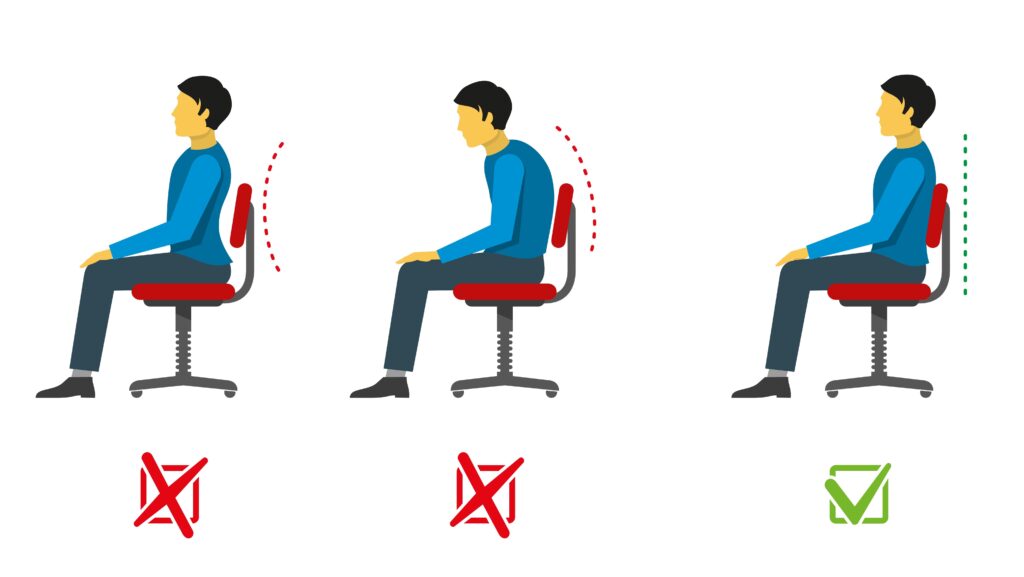
It is important to sit with your feet flat on the floor, hips, and knees bent at a 90-degree angle, shoulders relaxed, and head straight. Having a proper sitting posture can help improve focus, reduce fatigue, and reduce the strain on your lower back.
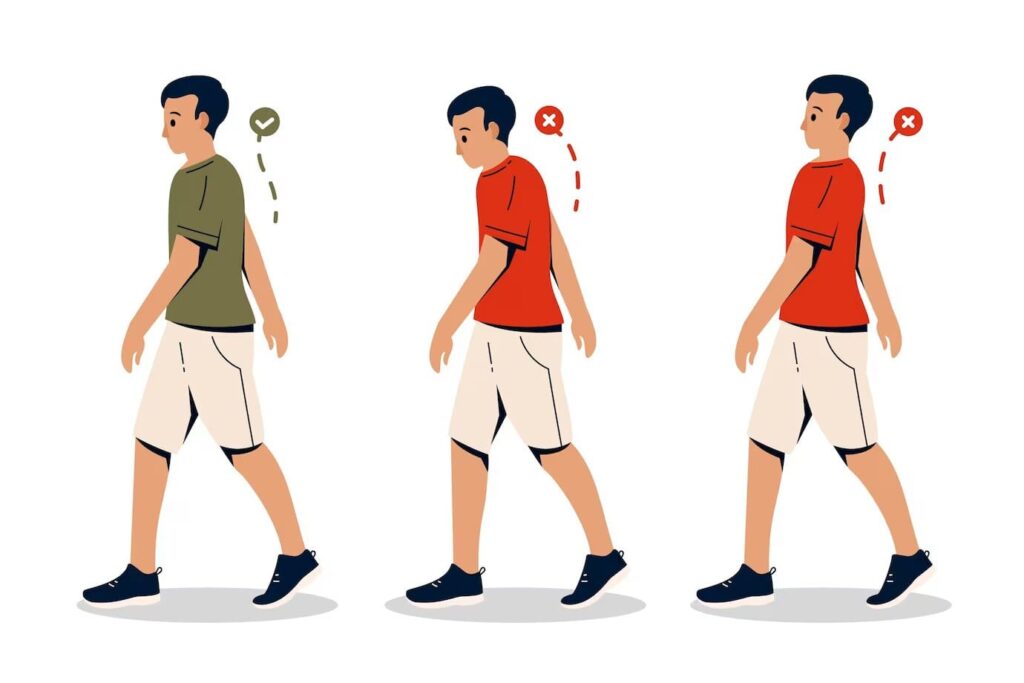
When you walk, keep your chin up and your eyes looking forward. Avoid leaning forwards or backward, and maintain a straight line between your head, neck, and spine. Good walking posture helps to enhance balance while strengthening core muscles and improving coordination.
There are several common postural problems including
Each type of posture has its own set of associated problems which can be addressed through targeted exercises explicitly designed for them.
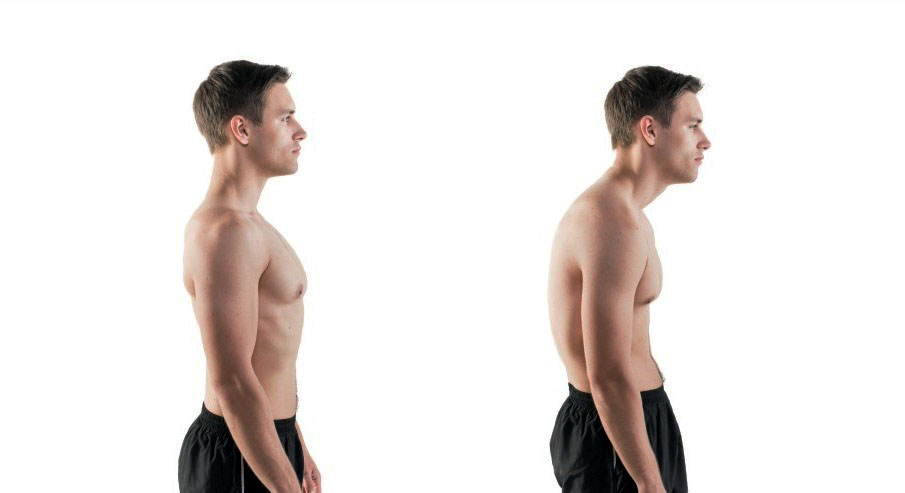
Forward head carriage is when your chin juts forward and your neck muscles become tight. To correct this posture, practice chin tucks where you draw your chin back and down until it is in line with the rest of your spine. Additionally, strengthening exercises for the upper back and shoulder muscles can help support a better posture.

Rounded shoulders are the most common postural deviations since many people spend extensive periods of time sitting. To correct this posture, make sure to keep your shoulders down and away from your ears when you stand or sit. This will help activate the rhomboid muscles, which can strengthen the mid-back and aid in maintaining good posture.
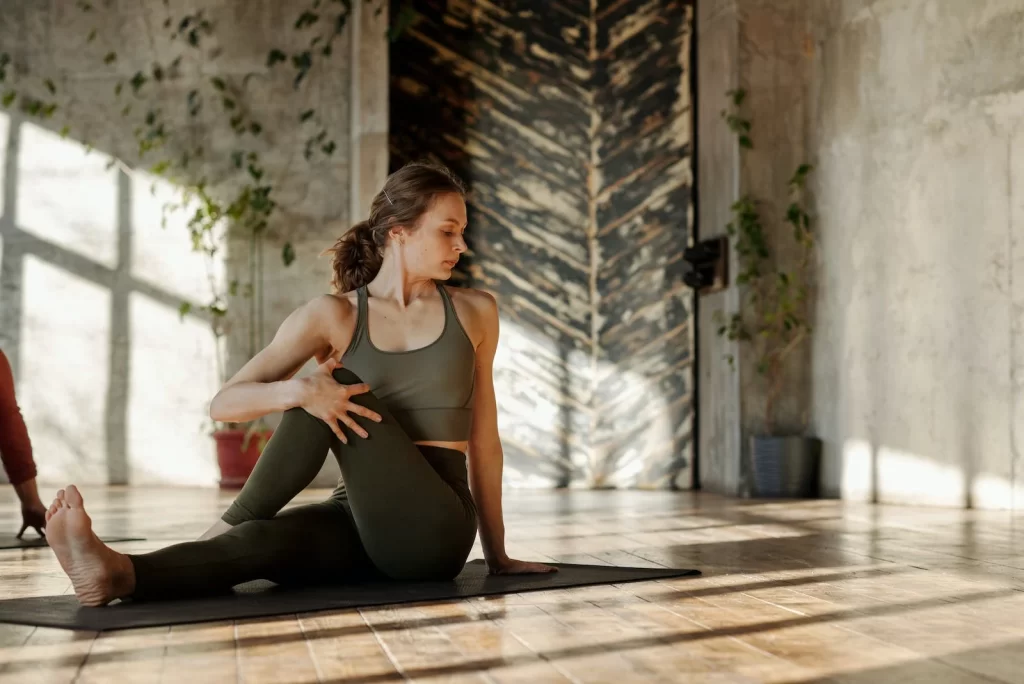
Flexed posture is when your shoulders are rounded forward, and your spine is curved. To correct this posture, focus on retraining your muscles to hold a more upright position. Additionally, practice exercises that strengthen the upper back and shoulder muscles to help support good posture.
By understanding these postural issues and their effects on our bodies, we can better manage them before they become more serious health concerns down the line.
Maintaining a good posture is essential for healthy living. Unfortunately, many of us tend to adopt bad posture habits, which can lead to muscular imbalances, pain, and even disability. Thankfully, several stretching and strengthening exercises can help correct and improve posture and these are the best exercises for posture correction.
One example of such exercises is yoga poses, which can focus on strengthening the back and abdominal muscles while stretching the entire body. Fortunately, there are several easy core exercises for seniors can do to refine their posture and alleviate discomfort such as back posture correction exercises.
One great exercise to improve posture for seniors is the chin tuck, where you gently bring your chin down toward your chest, lengthening the back of your neck.
Another effective exercise is the shoulder squeeze, where you bring your shoulders up and back, squeezing your shoulder blades together.
Additionally, the standing hamstring stretch can improve flexibility in the lower back and legs, helping to reduce pain and improve posture.
To do this, stand against a wall with your feet shoulder-width apart and your back straight. Slowly slide down the wall until you reach a 90 degree angle in your knees and hold for 30 seconds. This exercise strengthens your core and helps you maintain proper posture.
To do this, sit up straight in a chair with your arms at your sides. Squeeze your shoulder blades together and hold for 5 seconds, then release the squeeze and relax your shoulders.
These exercises are simple to do, require no equipment, and can easily be incorporated into your daily routine.
By practicing good posture exercises for seniors and regularly doing these exercises, seniors can maintain their strength and prevent discomfort caused by poor posture.
Different exercises help in improving human body posture. Yoga is one of the mind-body practices that has become increasingly popular for its numerous benefits, including improved posture and overall health.
So, if you’re a beginner , consider incorporating this powerful practice into your routine for improved posture and overall health.
The core muscles are instrumental in our daily activities; it helps us maintain an upright position while sitting, standing, and walking. That’s why working out our core muscles to keep them strong and our posture erect is immensely important.
The core exercises for posture incluse abdominal exercises, such as Pilates for posture, crunches, or yoga, which, when done correctly, will engage your core muscles.
Does running improve posture? Another way to do it is by incorporating more standing activities into your routine, like standing desk or standing while performing other activities like cooking or reading, as well as walking, running or cycling for an active lifestyle. Remember, a strong core means a healthy posture, which leads to better overall health.
Is pilates good for posture? With its emphasis on proper alignment and core stability, Pilates can help correct imbalances in the body that may be causing poor posture. By targeting specific muscles in the back, hips, and shoulders, Pilates exercises such as single leg extension pilates can help to strengthen and elongate these areas, leading to improved posture and reduced risk of pain or injury.
Posture corrector do they work? The best posture corrector for elderly Individuals provides comfort and support while gently urging the spine and shoulders into proper alignment. From back braces to shoulder straps, many products on the market are designed specifically for seniors.
When choosing a posture corrector, it is essential to look for one that is adjustable for a customized fit, breathable for all-day comfort, and made of durable, high-quality materials. Older adults can enjoy improved mobility, reduced pain, and enhanced confidence in their daily activities with the correct posture corrector and with balanced and posture exercises for seniors.
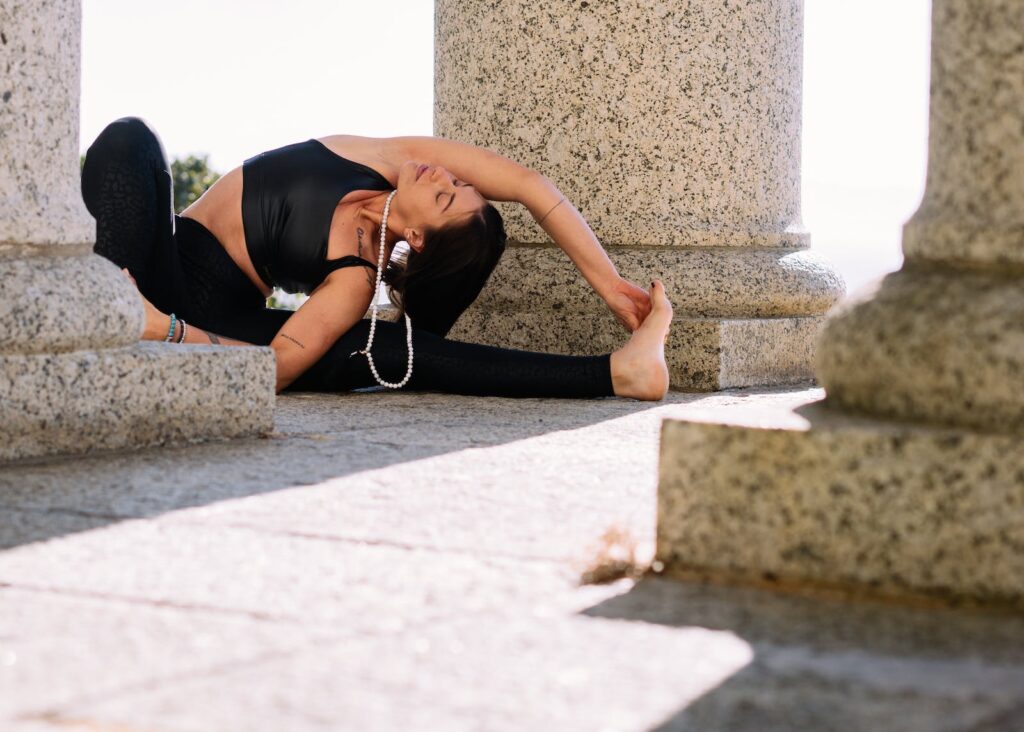
Proper posture plays an essential role in the well-being of our body. Sadly, many of us overlook the importance of maintaining good posture, leading to musculoskeletal problems. Problems such as upper and lower back pain or stiff neck muscles are common among people who have a flat back posture or imbalanced neck muscles.
How to fix neck posture? The simple trick is to regularly stretch your neck muscles, which can alleviate tension and reduce the chance of injury. Additionally, try adjusting your workspace or sleeping position so that neck is aligned with your spine.
Along with that, remember to stretch and take frequent breaks throughout the day as these are good posture exercises for seniors. So if you want to avoid the hassle of dealing with aches and pains due to incorrect posture, start working on it today.
How to improve walking posture? The chief way to improve your posture is to keep your chin up and your shoulders back, while engaging your core muscles. You should also take shorter steps and land on the middle of your foot while walking. Lastly, invest in comfortable shoes that properly support your feet and allow for natural movement.
How to fix flat back posture? Strengthening the muscles of the back, hips, and thighs, focusing on sitting up straight, and avoiding hunching over electronic devices are all effective ways to improve posture. With dedication and consistency, you can say goodbye to flat back posture and hello to a stronger, healthier body.
Posture is the alignment of the body in a way that distributes weight evenly and minimises strain on the joints and muscles.
Exercise can be a helpful tool in correcting poor posture, but there are both pros and cons to consider. On the one hand, the best exercise for posture correction can strengthen the muscles that support posture, such as the core muscles and back muscles. It can also increase flexibility, which can help prevent stiffness and improve the range of motion.
On the other hand, some types of exercise can exacerbate poor posture if they are not done correctly or if they focus on specific muscle groups to the exclusion of others. Furthermore, individuals with certain postural problems may need specialised exercises or postural exercise physical therapy to achieve proper alignment.
Ultimately, the pros and cons of exercise for posture correction depend on the individual’s needs and the type of exercise being considered.
Maintaining good posture is essential to prevent various health concerns such as back pain, neck pain, and even headaches. Although some individuals can improve their posture with simple exercises and reminders, others may encounter more serious posture issues that require the help of a professional.
Seeking the assistance of a doctor or physiotherapist can provide personalised guidance and appropriate solutions to address these concerns. These professionals are equipped with the knowledge and expertise to accurately diagnose posture-related problems and devise an effective plan for improvement. Please don’t overlook the option of getting professional help, as it can enhance your overall health and wellness.
Taking steps to improve your posture is a significant health and lifestyle decision. While you can do stretching and strengthening exercises independently, getting a postural diagnosis from a professional can help pinpoint individual needs and provide advice on advancing your progress.
Yoga is also an effective tool that offers additional benefits such as overall improved health and greater relaxation. It’s essential to understand the physical causes of posture problems, how they manifest, the factors that contribute to them, and how they can be corrected with proper exercise techniques.
The key takeaway here is that fixing lousy posture isn’t complicated or time-consuming; it just requires conscious effort, consistency in practice, and dedication over time in order to experience lasting results. Remember – better posture means pain-free life!

God, family, fitness – in that order. Fitness isn’t my job, it’s my passion. My favorite things include traveling the world, being a momma and making a difference.
10 years of experience in the wellness industry has brought me to an understanding that when you’re ready – you’ll do it. So when you are, I’m here to help simplify your fitness.
The last “program” you’ll ever buy. Your individualized training & nutrition plan that teaches the why & how to create lasting changes with me by your side every step of the way!
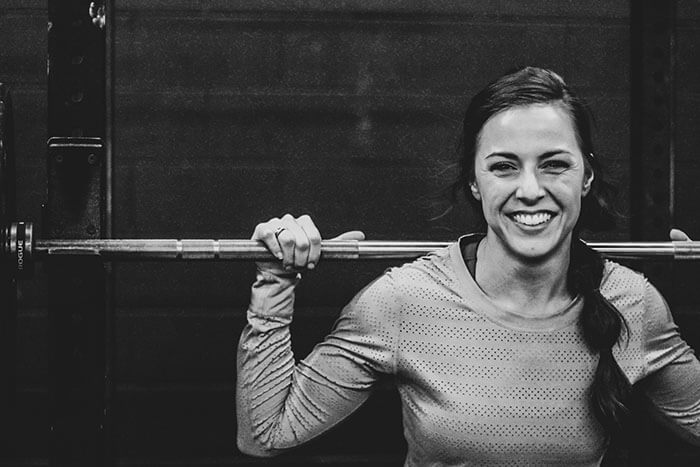
Error: No feed found.
Please go to the Instagram Feed settings page to create a feed.
Level 1, 2 & 3: Level Up your workouts with beginner to advanced plans designed with a focus lift each month, progressive overload, instructional videos & all inclusive training & nutrition guides.
Copyright ©2024. Gamechanger
A BRANDT CREATIVE CO. TEMPLATE. Trusted by Wimgo.